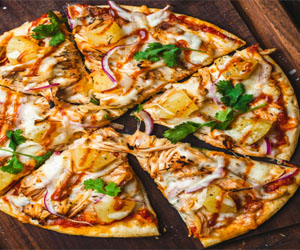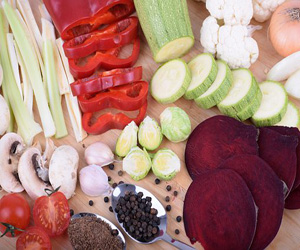


Preserving Culinary Traditions Across Generations

In the ever-evolving world of culinary trends and fads, there exist recipes that defy the test of time, transcending generations and retaining their place as beloved classics. These are the timeless recipes, culinary creations that have been passed down through families and cultures for centuries. Timeless recipes are a testament to the enduring power of tradition, flavor, and the human connection to the past.
Timeless recipes offer more than just nourishment; they serve as windows into history, culture, and the lives of our ancestors. These are the dishes that our great-grandmothers prepared, that our parents lovingly taught us, and that we, in turn, share with our children. They are culinary treasures that bind generations and create a sense of connection that goes beyond the dinner table.
At the heart of timeless recipes is the idea of familiarity. These are the dishes that provide a sense of comfort and solace in an ever-changing world. Whether it's a bowl of homemade chicken soup, a plate of perfectly roasted chicken, or a classic apple pie, these recipes transport us to a place of contentment and security, reminding us of the simple joys of life.
One remarkable feature of timeless recipes is their ability to adapt to changing times and tastes. While the core ingredients and techniques remain consistent, there is often room for personalization and regional variations. Families and cultures around the world have put their unique spin on these timeless classics, ensuring that they remain relevant and relatable to each new generation.
Timeless recipes have a universal appeal that transcends borders and cultures. While the specific dishes may differ from one region to another, the concept of time-honored cuisine is present everywhere. Whether it's the hearty, slow-cooked stews of Europe, the bold and flavorful curries of India, or the simple yet elegant dishes of Japan, every culture has its own set of timeless recipes that reflect its culinary heritage.
Beyond their delicious flavors and adaptability, timeless recipes play a vital role in preserving culinary traditions and sharing a piece of history. Preparing and sharing these dishes become acts of love and respect for those who came before us, as well as a means of educating the next generation about their cultural heritage. These recipes become symbols of our roots and a way to pass down the flavors and traditions of the past.
In a world where fast food and modern conveniences often take center stage, timeless recipes remind us of the importance of slowing down and savoring life's simple pleasures. They encourage us to gather around the table, share a meal with loved ones, and find comfort in the familiar. Timeless recipes are a testament to the enduring power of tradition, flavor, and the human connection to the past, proving that some things are truly timeless, and they can be passed down from generation to generation, preserving the rich tapestry of our culinary heritage.


Transforming Your Life For The Better
 Lifestyle change is a concept that holds the potential to redefine our well-being, relationships, and overall quality of life. It involves a deliberate and conscious shift in one's habits, behaviors, and choices, often with the aim of improving health, happiness, and fulfillment. Whether you're seeking to overcome challenges, enhance your personal development, or simply find a better path in life, lifestyle change is a powerful tool to help you accomplish these goals.
Lifestyle change is a concept that holds the potential to redefine our well-being, relationships, and overall quality of life. It involves a deliberate and conscious shift in one's habits, behaviors, and choices, often with the aim of improving health, happiness, and fulfillment. Whether you're seeking to overcome challenges, enhance your personal development, or simply find a better path in life, lifestyle change is a powerful tool to help you accomplish these goals.
The Catalyst For Change
Lifestyle change often begins with a catalyst, a moment of realization that prompts you to reevaluate your current situation. It could be a health scare, a feeling of stagnation, or a desire for greater self-fulfillment. Whatever the trigger, it serves as a powerful motivation to embark on a journey of transformation.
A Culinary Revolution For Busy Lives
 The Simplicity Of One-Pot Meals
The Simplicity Of One-Pot Meals
One-pot meals, as the name suggests, involve cooking an entire dish in a single pot or pan. This approach significantly simplifies the cooking process, making it accessible to everyone, from seasoned home cooks to kitchen novices. It's a game-changer for those with busy schedules, as it offers a shortcut to hearty, flavorful meals without the need for an arsenal of pots, pans, and utensils.
Why One-Pot Meals?
Here are a few compelling reasons why one-pot meals have become a staple in many households:
1. Time-Saving: One-pot meals are champions of efficiency. By combining ingredients in one pot, you reduce the time spent on food preparation and cleanup, making these dishes perfect for weeknight dinners.
2. Versatility: From pasta dishes and stir-fries to stews and casseroles, the range of one-pot recipes is astonishing. Whether you're in the mood for something hearty and comforting or light and healthy, there's a one-pot recipe to suit your cravings.
The Art Of Ingredient Substitutions
 All-Purpose Flour: If you're out of all-purpose flour and need a substitute for baking, you can use alternatives like almond flour, coconut flour, or oat flour, depending on the recipe.
All-Purpose Flour: If you're out of all-purpose flour and need a substitute for baking, you can use alternatives like almond flour, coconut flour, or oat flour, depending on the recipe.
Sugar: For a healthier alternative, you can replace refined sugar with options like honey, maple syrup, or coconut sugar.
Butter: When a recipe calls for butter, you can use alternatives like coconut oil, olive oil, or unsweetened applesauce, depending on the application.
Heavy Cream: To replace heavy cream in savory dishes, you can use ingredients like Greek yogurt, silken tofu, or a mixture of milk and butter. For desserts, coconut cream can be a suitable alternative.
Healthier Ingredient Substitutions
Ingredient substitutions aren't just about convenience; they can also be used to make your dishes healthier. For example:
White Rice: Swap white rice for brown rice, quinoa, or cauliflower rice to increase fiber content and boost nutritional value.
Mayonnaise: In salads and sandwiches, you can replace mayonnaise with Greek yogurt for a lower-fat alternative.
Breadcrumbs: Instead of breadcrumbs, you can use crushed nuts or rolled oats for a gluten-free option in recipes.
Dietary Restrictions And Allergies
Ingredient substitutions are especially crucial for individuals with dietary restrictions and allergies. For those with gluten allergies, there are many gluten-free flours and starches available.
A Recipe For Health And Convenience
 Meal planning is a culinary skill that has grown in importance over the years, offering numerous benefits for individuals and families. It involves preparing a strategy for what to eat, how to shop, and how to prepare your meals in advance. This proactive approach to food management not only makes life easier but also has profound implications for health, nutrition, and overall well-being.
Meal planning is a culinary skill that has grown in importance over the years, offering numerous benefits for individuals and families. It involves preparing a strategy for what to eat, how to shop, and how to prepare your meals in advance. This proactive approach to food management not only makes life easier but also has profound implications for health, nutrition, and overall well-being.
The Basics Of Meal Planning
Meal planning is a systematic approach to deciding what to eat and when. It typically involves:
Menu Creation: You select the dishes and recipes you'd like to prepare for a set period, whether it's for a week, two weeks, or a month.
Ingredient List: Once your menu is set, you compile a list of all the ingredients you'll need for those meals.
Shopping: Armed with your ingredient list, you go shopping for the items you don't have on hand.
Preparation: You then prepare some components of your meals in advance, like chopping vegetables, marinating proteins, or cooking grains, to streamline cooking during the week.
A World Of Perfection In A Tiny Cup
 For an espresso aficionado, the journey begins with selecting the finest coffee beans. They meticulously examine the origin, variety, and roast level, knowing that these factors will greatly influence the resulting shot. It's not just about caffeine; it's about the nuances and subtleties in flavor. Beans from Ethiopia offer a different experience than those from Colombia, and an espresso aficionado savors each distinctive profile.
For an espresso aficionado, the journey begins with selecting the finest coffee beans. They meticulously examine the origin, variety, and roast level, knowing that these factors will greatly influence the resulting shot. It's not just about caffeine; it's about the nuances and subtleties in flavor. Beans from Ethiopia offer a different experience than those from Colombia, and an espresso aficionado savors each distinctive profile.
Grinding the beans is a science in itself. The grind size must be just right, neither too fine nor too coarse, to achieve the perfect extraction. Precision is key, and aficionados invest in top-notch grinders that allow for minute adjustments. They know that a slight tweak can transform a mediocre shot into an exceptional one.
The espresso machine is their prized possession. It's a piece of equipment they've researched extensively, chosen carefully, and maintain lovingly. Every aspect of the machine, from the water temperature to the pressure, is controlled with meticulous care. Brewing an espresso shot is a performance, with the barista as the conductor and the machine as the orchestra.
Timing is everything. The duration of the shot, often measured in seconds, is closely monitored. Espresso aficionados understand that a few seconds too short or too long can make all the difference in flavor and aroma. It's a delicate balance, and they have it down to a precise science.